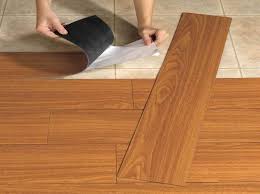ENVIRONMENT: Look for paint, carpet, cabinetry and countertops that dont gas off or present other health risks

Studies suggest our interior space can drastically effect our overall wellbeing. The colour of your space, the texture of the materials you touch and, most importantly, the indoor air quality all influence how you feel.
Your home is an extension of you. Break free from some of the toxic home products, and design your best life.
Here are some of my top suggestions for products to create a space that is safe for you, and the environment, as well as the top contenders to look out for.
Cabinetry

The Canadian Lung Association website says pressed wood cupboards contain formaldehyde and can cause illness or irritation. Formaldehyde is a proven carcinogen. A typical cabinet can off-gas 70 parts per million formaldehyde. The good news is, there are better options.
Do not assume, because a salesperson tells you their cabinetry is eco-friendly that it actually is. The only way for the cabinetry to be comply with the strictest indoor air regulations (referred to as California Air Resources Board (CARB) compliant) is for the pressed wood, plywood, interior, adhesives and all components to be certified for indoor air quality, not just one component such as a low-VOC finish. To truly be environmentally friendly, a cabinet must jump through several hoops, due to its many components.
Flooring

Vinyl, laminate and even hardwoods can contain chemicals that can off-gas into your interior space. These chemicals are found in the finish used on the floor, in the actual material, as well as in the adhesives used in manufacturing.
As with cabinetry, look for the CARB compliant logo and certification as well as a Forest Stewardship Council logo on the actual flooring (not just the packaging) to ensure it was sustainably harvested.
Countertops
Granite can contain radon, a radioactive gas formed naturally by the breakdown of uranium in soil, rock and water.
Choose quartz instead, as most are certified with GreenGuard for indoor air. Cambria quartz for example, is mined within Canada. The natural quartz stone is then ground and processed, making this material twice as strong as granite, and safe for indoor air. Even better, it cant harbour bacteria, unlike granite, and is virtually maintenance free.
Wall paint
Paint can contain volatile organic compounds (VOCs), chemicals that turn to vapour at room temperature. Look for zero VOC paints. Water-based paints mean not having to use harsh chemicals when cleaning up.
Carpet
Wall-to-wall carpeting was a status symbol in the 1950s. Today many consumers forgo carpet in favour of an easier-to-clean surface that does not harbour bacteria, dust and pet hair. When it comes to chemicals, many carpets contain an abundance of them. My advice? Choose a CARB compliant hardwood instead.
Favourite eco-friendly products
Cambria quartz for countertops, shower surrounds and even table tops
Kohler cast iron sinks. Theyre made from more than 80% recycled materials and last for life.
William Standen Co. custom cabinetry that exceeds all indoor air-quality regulations.
Farrow and Ball, clay based interior paints and hand printed wallpapers.
Dacor kitchen appliances. Some of the steel is recycled and most are Energy Star certified.
Recycled floor and wall tiles from Cergagres. They are made from recycled material yet boast the latest colours and styles.
Source
|